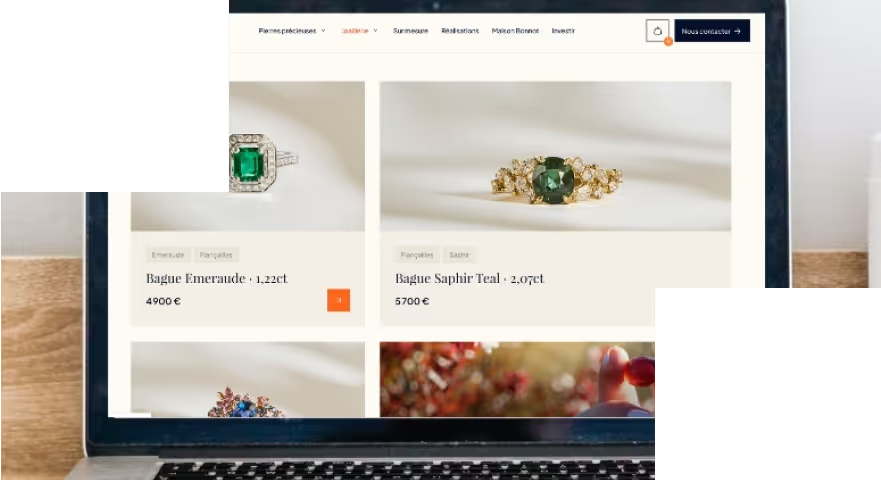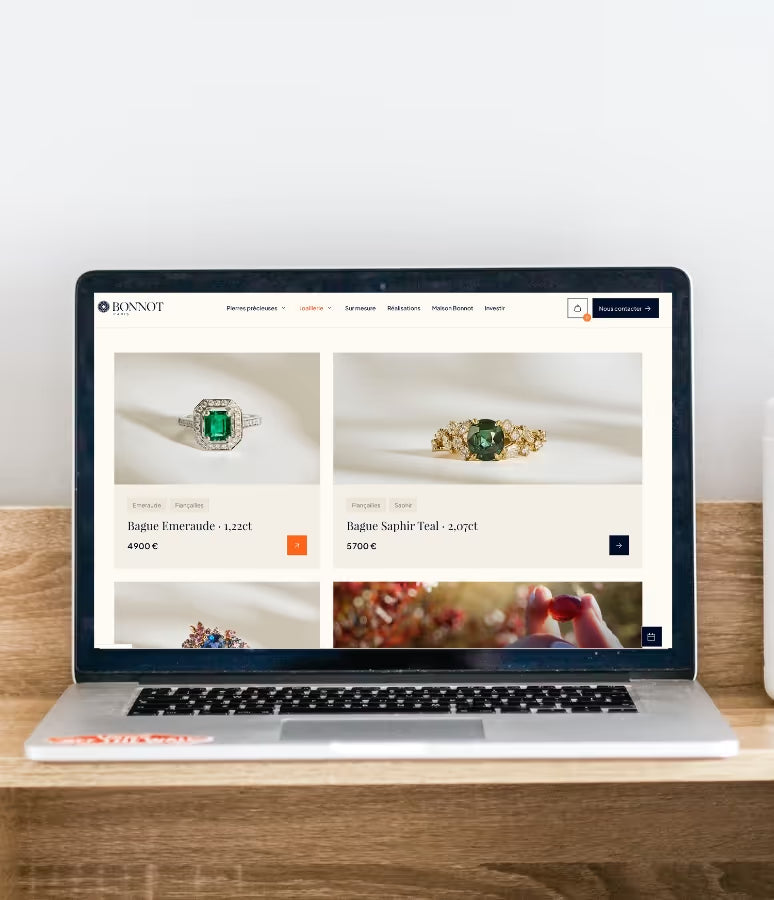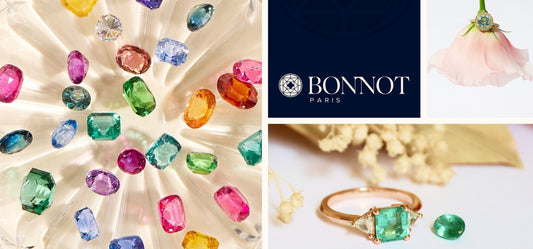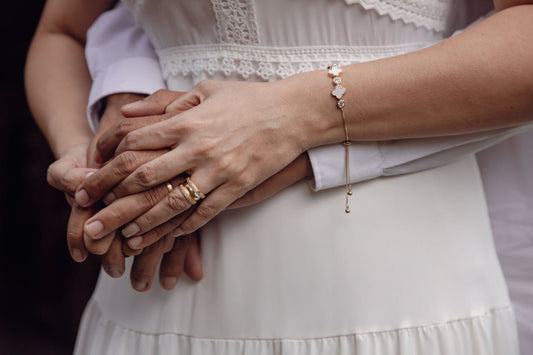Guide to precious stones
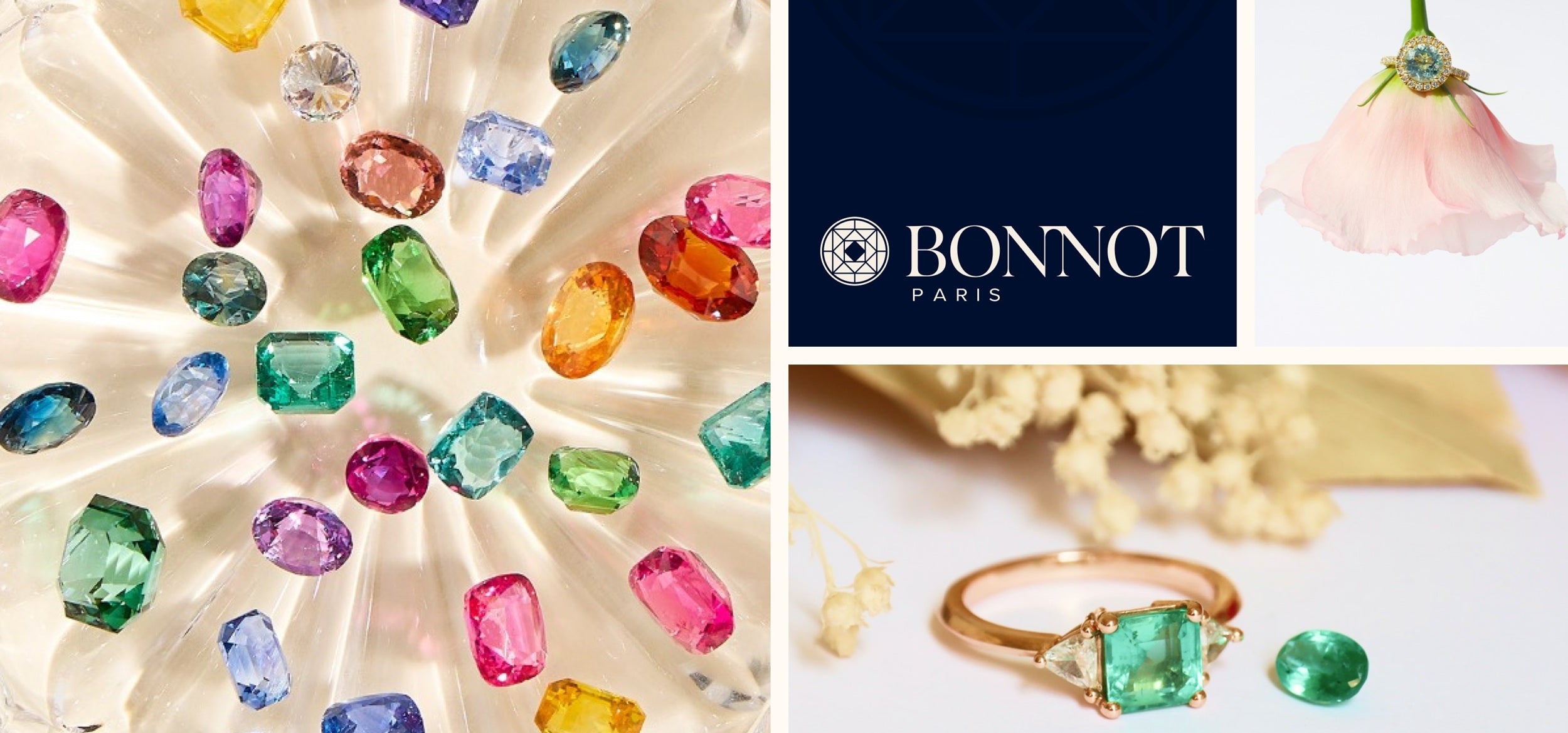
THE precious stones fascinate with their light, their history and their rarity. This guide helps you understand, appreciate and well choose a stone, with complete peace of mind. You will find simple explanations, useful for online purchases. For any advice or questions, contact us : we are at your service.

1. The main families of stones: precious, fine and ornamental
THE precious stones in the strict sense of the term are rare. There are only 4, and they are expensive. fine stones are more numerous and varied, but some can also be worth large sums. ornamental stones offer varied textures and colors. Their wide availability means low price.
1.1 Traditional gemstones
There are 4 precious stones:
THE diamond is distinguished by its fire and hardness. The ruby is dark red and the sapphires come in many shades.emerald seduced by its deep and mysterious green. Their prestige is based on rarity, demand and their resistance.
1.2 Fine stones (often called “semi-precious”)
We call fine stone all valuable stones that are not precious. Among the most popular:
- Amethyst
- Citrine
- Topaz
- Garnet
- Aquamarine
- Tourmaline
- Peridot
- Morganite
- Spinel
- Tanzanite
- Blue zircon
- Etc.
They cover all shades, from pastel to intense. Some are highly sought after, such as Paraiba tourmaline, THE bright red spinels or even tanzanites. They offer a excellent beauty/price ratio.
Terminological note : the term "semi-precious" is in common use. In commerce and gemology, however, the legal term is "fine stone".

SEE OUR BLUE SAPPHIRES
1.3 Ornamental stones
These are pretty stones, but which are not distinguished by their rarity or brilliance. Among them: lapis lazuli, jade, malachite, turquoise, tiger's eye, onyx, jasper, etc. They play the card of matter : veins, clouds, stripes, sequins. The cabochon suits them, as do fancy cuts.
2. Why be interested in stones?
For their aesthetic value: color, shine, transparency, unique textures. The harmonies vary with the light and the setting. A beautiful cut reveals the whole soul of a gem.
THE precious stones often have an emotional value associated with the beautiful jewelry : wedding anniversaries, birthstones, cultural meanings. A piece of jewelry tells a story and is worn like a talisman.
For heritage value. A precious stone is synonymous with rarity, durability and transmission potential.A beautiful stone can be preserved and passed on... or resold with added value.
3. Where do precious and fine stones come from?
The major deposits vary according to the stones:
- Sapphires : Sri Lanka, Madagascar, historical Kashmir
- Ruby : Mozambique, Myanmar
- Emeralds : Colombia, Zambia
- Tanzanite : Tanzania
- Opals : Australia and Ethiopia
Each origin prints a signature of color and inclusions.
The typical route is as follows:
Mine → sorting → cutting → traders → jewelers
Some stones pass through renowned cutting centers:
- Jaipur
- Bangkok
- Idar-Oberstein
- Antwerp for diamonds
At each stage, quality is specified: cutting, calibration, conformity.
Traceability is progressing
Responsible sourcing initiatives like that of Bonnot Paris, audits, labels and independent certificates improve the traceability of precious stones. Serious companies document the origin when possible, and indicate the treatments. Ethics cover the environment, working conditions and transparency of descriptions.
Bonnot Paris Precious Stones
Maison Bonnot Paris selects stones based on strict criteria: beauty of color, perfect cut, harmonious proportions, certificate of authenticity and transparency on possible treatments. Partners are chosen for their reliability, their commitment and circuits ofresponsible sourcing.
Our positioning: a constant quality, precise size tolerances, treatments only permitted if stable and clearly indicated.
Added value for you: guarantee, careful selection and expert advice for each project, from the classic solitaire ring to the piece of jewelry with character.

4. Treatments and improvements of precious stones: heated, treated, natural
Why treat a gemstone? stabilize the color, improve the clarity and reveal the aesthetic potential. These practices are permitted when they are known, sustainable and advertised. The information must appear on the product sheet and, if possible, on the certificate.
Main treatments:
- Heated (very common for sapphires/rubies)
- Oiling (emeralds)
- Irradiation and annealed (blue topaz, sometimes quartz)
- Diffusion
- Filling (filling) of fractures
THE gemstone treatment can remain compatible with jewelry use and ethics when it is announced. It influences the value, perceived rarity and maintenance. A serious seller indicates the treatment, its nature and its stability upfront.
Trick : favor untreated or lightly treated stones for rarity.Or accept standard treatment to optimize the budget, with complete transparency.
5. How are gemstones produced?
Extraction methods include alluvial, open-pit mine and underground. Artisanal and small-scale activity is common for gemsIt can boost local economies if it is well supervised.
After extraction, the steps are:
- Washing
- Sorting
- Roughing out
- The size
- Polishing
- Possible certification
THE calibrated sizes serve mass-produced jewelry. Exceptional pieces receive a workshop size by lapidary experienced, tailor-made.
THE environmental issues and social issues are major. Water management, site rehabilitation, working conditions, safety. Good practices are based on local programs, cooperation and responsible supply chains. At Bonnot Paris, we pay close attention to ethical sourcing of our precious stones.

6. The art of cutting: revealing the brilliance of precious and fine stones
There size aims for brilliance, fire, symmetry and proportions consistent with the refractive index of the cut stone. The cutter must try to achieve a finished product as heavy as possible, while enhancing beautySometimes compromises have to be made. A slight weight loss can improve light: it's a quality choice.
Common cuts and shapes: round brilliant, oval, pear, cushion, princess, emerald, marquise, heart. See our article on the gemstone cutting for a complete guide on the subject.
Signs of a good size: harmonious proportions, clear symmetry, no "window" or "off" visible on the front face. A good polish enhances the shine. The clean edges testify to careful work.
7. How to determine the quality of a gemstone?
THE "4C" apply to the diamond:
- Carat (weight)
- Color
- Purity (Clarity)
- Size (Cut)
SEE OUR DIAMONDS
Lab reports standardize the scoring. Fluorescence is an additional factor.
For colored gemstones, the priority is color: hue, saturation, tone. Next come clarity, size, and weight. Commercial terms exist, but the proof remains visual. Vibrancy and consistency of color are paramount.
Some gems exhibit optical phenomena: shimmer (cat's eye), asterism (stars), adularescence (moonstone), pleochroism (multiple hues). They increase interest and guide the size.
Certificates and laboratories:
The certificate describes the variety, L'probable origin, THE treatments and the measures. It is not a judgment of taste, but a technical reference document.

8.Natural vs. Synthetic Stones
THE natural gemstones have been shaped by nature. They have inclusions typical and present organic variations.
THE laboratory stones or synthetic ones have the same chemical and crystalline composition as the natural version (e.g. synthetic sapphire). They offer an ethical and cheaper, of a great purityThe downside is the lack of magic. After all, a gemstone is a miracle of nature.
Impacts on the price, durability and transparency: synthetic stones must be named accordingly, mentioned laboratory.
9. Gemstone Care and Durability
Hardness (from 1 to 10 on theMohs scale) influences thegemstone care. Inclusions also count in gauging the resistance of a stoneA hard gem can remain fragile to shocks in the event of numerous inclusions.
Cleaning is done with lukewarm water and mild soap, soft brush, careful rinsing, microfiber cloth. Avoid thermal shock, aggressive solvents and ultrasound for fragile, oiled stones or those with many inclusions. Store them separately to prevent scratches.

10. How to shop online
Checklist before purchase of a precious stone :
- Ensure a full information : type of stone, weight (carats), dimensions, origin (if known), treatments, type of size
- Reliable visuals: macro photos and 360° video, varied lighting
- Buy a gemstone with a certificate is always recommended, especially for individuals without knowledge
Budget Tips
Unless you have an unlimited budget, you will probably have to make compromise. Color, size, clarity and weight should be prioritized based on your goals. A bright color with a balanced size often outperforms a heavier one. Set a budget range and compare with equivalent features.
If you need to advice, we are always available to help you find the right gemstone and/or craft your personalized ring.
Fondateur de Bonnot Paris


